Sarmad Mehrdad
Cost Function Estimation Using Inverse Reinforcement Learning with Minimal Observations
May 13, 2025Abstract:We present an iterative inverse reinforcement learning algorithm to infer optimal cost functions in continuous spaces. Based on a popular maximum entropy criteria, our approach iteratively finds a weight improvement step and proposes a method to find an appropriate step size that ensures learned cost function features remain similar to the demonstrated trajectory features. In contrast to similar approaches, our algorithm can individually tune the effectiveness of each observation for the partition function and does not need a large sample set, enabling faster learning. We generate sample trajectories by solving an optimal control problem instead of random sampling, leading to more informative trajectories. The performance of our method is compared to two state of the art algorithms to demonstrate its benefits in several simulated environments.
How Does the Inner Geometry of Soft Actuators Modulate the Dynamic and Hysteretic Response?
Aug 09, 2023



Abstract:This paper investigates the influence of the internal geometrical structure of soft pneu-nets on the dynamic response and hysteresis of the actuators. The research findings indicate that by strategically manipulating the stress distribution within soft robots, it is possible to enhance the dynamic response while reducing hysteresis. The study utilizes the Finite Element Method (FEM) and includes experimental validation through markerless motion tracking of the soft robot. In particular, the study examines actuator bending angles up to 500% strain while achieving 95% accuracy in predicting the bending angle. The results demonstrate that the particular design with the minimum air chamber width in the center significantly improves both high- and low-frequency hysteresis behavior by 21.5% while also enhancing dynamic response by 60% to 112% across various frequencies and peak-to-peak pressures. Consequently, the paper evaluates the effectiveness of "mechanically programming" stress distribution and distributed energy storage within soft robots to maximize their dynamic performance, offering direct benefits for control.
FiMReSt: Finite Mixture of Multivariate Regulated Skew-t Kernels -- A Flexible Probabilistic Model for Multi-Clustered Data with Asymmetrically-Scattered Non-Gaussian Kernels
May 15, 2023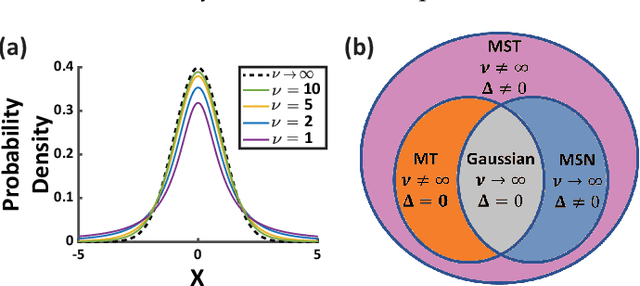
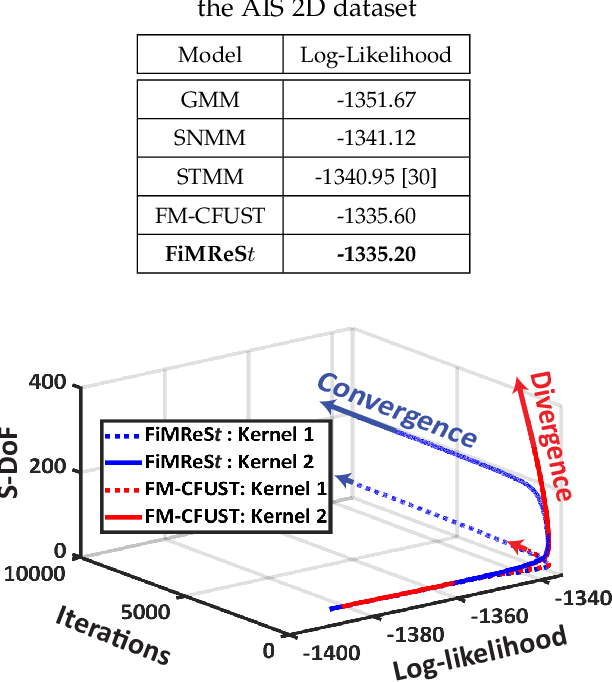
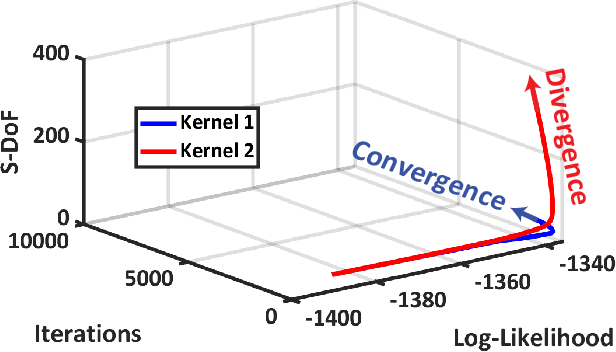
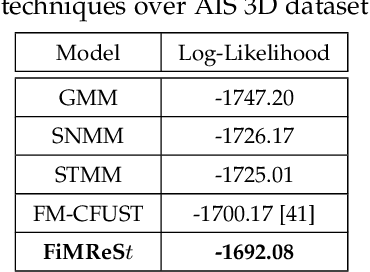
Abstract:Recently skew-t mixture models have been introduced as a flexible probabilistic modeling technique taking into account both skewness in data clusters and the statistical degree of freedom (S-DoF) to improve modeling generalizability, and robustness to heavy tails and skewness. In this paper, we show that the state-of-the-art skew-t mixture models fundamentally suffer from a hidden phenomenon named here as "S-DoF explosion," which results in local minima in the shapes of normal kernels during the non-convex iterative process of expectation maximization. For the first time, this paper provides insights into the instability of the S-DoF, which can result in the divergence of the kernels from the mixture of t-distribution, losing generalizability and power for modeling the outliers. Thus, in this paper, we propose a regularized iterative optimization process to train the mixture model, enhancing the generalizability and resiliency of the technique. The resulting mixture model is named Finite Mixture of Multivariate Regulated Skew-t (FiMReSt) Kernels, which stabilizes the S-DoF profile during optimization process of learning. To validate the performance, we have conducted a comprehensive experiment on several real-world datasets and a synthetic dataset. The results highlight (a) superior performance of the FiMReSt, (b) generalizability in the presence of outliers, and (c) convergence of S-DoF.
Deterioration Prediction using Time-Series of Three Vital Signs and Current Clinical Features Amongst COVID-19 Patients
Oct 12, 2022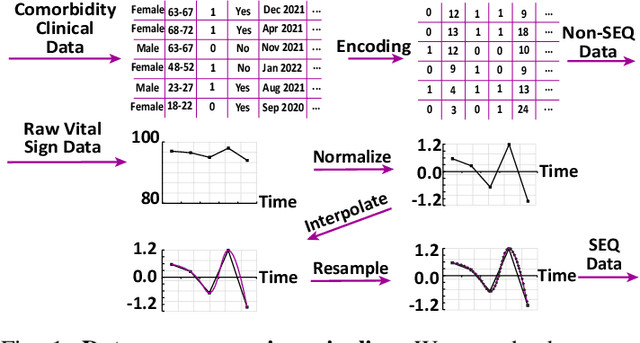
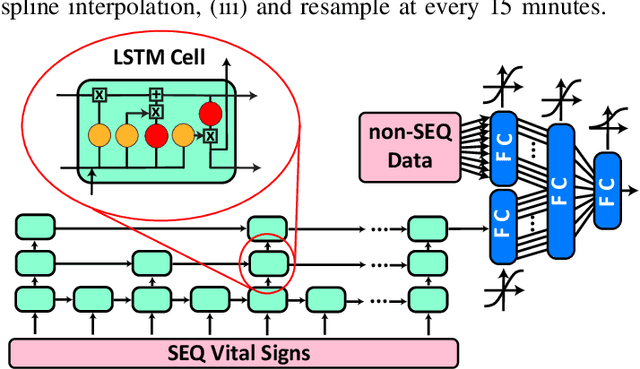
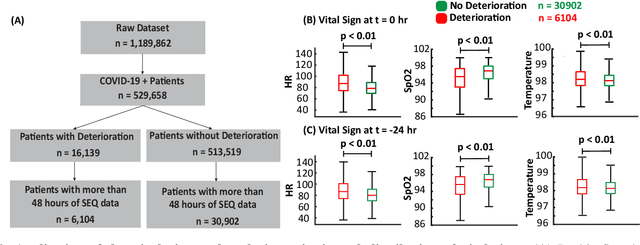
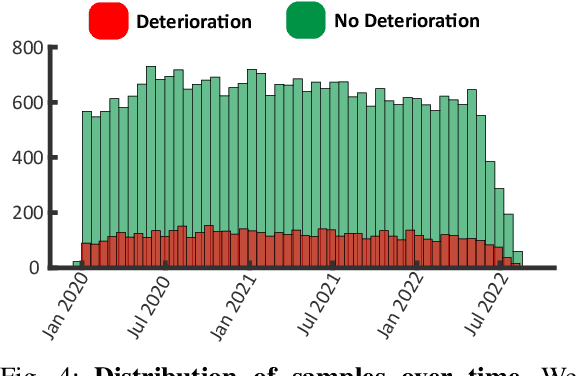
Abstract:Unrecognized patient deterioration can lead to high morbidity and mortality. Most existing deterioration prediction models require a large number of clinical information, typically collected in hospital settings, such as medical images or comprehensive laboratory tests. This is infeasible for telehealth solutions and highlights a gap in deterioration prediction models that are based on minimal data, which can be recorded at a large scale in any clinic, nursing home, or even at the patient's home. In this study, we propose and develop a prognostic model that predicts if a patient will experience deterioration in the forthcoming 3-24 hours. The model sequentially processes routine triadic vital signs: (a) oxygen saturation, (b) heart rate, and (c) temperature. The model is also provided with basic patient information, including sex, age, vaccination status, vaccination date, and status of obesity, hypertension, or diabetes. We train and evaluate the model using data collected from 37,006 COVID-19 patients at NYU Langone Health in New York, USA. The model achieves an area under the receiver operating characteristic curve (AUROC) of 0.808-0.880 for 3-24 hour deterioration prediction. We also conduct occlusion experiments to evaluate the importance of each input feature, where the results reveal the significance of continuously monitoring the variations of the vital signs. Our results show the prospect of accurate deterioration forecast using a minimum feature set that can be relatively easily obtained using wearable devices and self-reported patient information.
 Add to Chrome
Add to Chrome Add to Firefox
Add to Firefox Add to Edge
Add to Edge